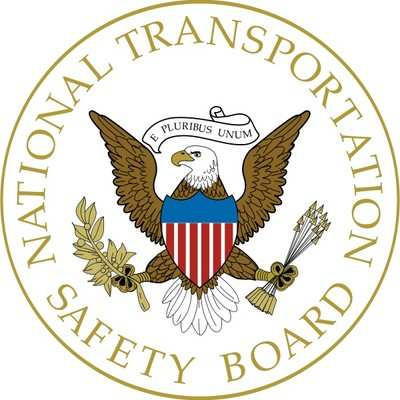Thu, Jun 22, 2023
Accident Flight Was His Third Flight In The Accident Airplane And That (Pilot) Had Recorded A Total Of 0.8 Hours Of Flight Experience
Location: Stoneville, North Carolina Accident Number: WPR21FA210
Date & Time: May 27, 2021, 18:35 Local Registration: N831HC
Aircraft: Mark Coby Early Bird Jenny Aircraft Damage: Destroyed
Defining Event: Aerodynamic stall/spin Injuries: 1 Fatal
Flight Conducted Under: Part 91: General aviation - Personal

Analysis: The pilot, who was the co-owner/co-builder of the experimental amateur-built airplane, was departing on a local flight. The other co-owner/co-builder of the airplane witnessed the accident takeoff and stated that the airplane’s pitch attitude was “a little steep” and that the airplane looked slow as it approached 150 ft above ground level in the climb. Both the coowner and another witness stated that the airplane’s wings were rocking before one wing dropped and the airplane entered a nose-down descent. The airplane impacted terrain about halfway down the 5,200-ft-long runway, and a postimpact fire ensued. Postaccident examination of the airframe and engine revealed no evidence of mechanical malfunctions or anomalies that would have precluded normal operation.
Review of the pilot’s logbook indicated that the accident flight was his third flight in the accident airplane and that he had recorded a total of 0.8 hours of flight experience. The coowner stated that he and the accident pilot took turns flying the airplane and that the day of the accident was the warmest day on which they had flown the airplane. The co-owner had flown the airplane earlier on the day of the accident and stated that, although the airplane’s takeoff profile was “flatter than usual,” the airplane otherwise performed well and handled as expected. The co-owner also stated that neither he nor the accident pilot had conducted any aerodynamic stalls in the airplane, which was not equipped with a stall warning system. The extent to which the accident pilot had explored the airplane’s low-speed handling characteristics during flight could not be determined based on the available evidence for this accident.
Review of the atmospheric conditions about the time of the accident indicated a density altitude of about 2,400 ft. Weight and balance documents for the airplane were not located, and the airplane’s weight and balance condition at the time of the accident was not determined. Autopsy and toxicology results for the pilot revealed evidence of an enlarged heart, anthracosis of the lungs, a carboxyhemoglobin saturation between 11% and 13%, and medications to treat high blood pressure. Minimal soot deposits were found in the trachea.
Given the available evidence for this accident investigation, it is unlikely that the pilot’s cardiac condition was a factor in this accident. His carboxyhemoglobin saturation was not likely associated with impairment and was most likely the result of postcrash exposure to carbon monoxide. The circumstances of the accident are consistent with the pilot’s exceedance of the airplane’s critical angle of attack during takeoff, which resulted in an aerodynamic stall and a loss of control. It is likely that the density altitude conditions at the time of the accident degraded the airplane’s takeoff performance and that the pilot’s unfamiliarity with the airplane’s handling characteristics (especially in higher-density-altitude conditions) and with low speed/aerodynamic stalls contributed to his failure to recognize and correct the airplane’s angle of attack before the stall occurred.
Probable Cause and Findings:
The National Transportation Safety Board determines the probable cause(s) of this accident to be: The pilot’s exceedance of the airplane’s critical angle of attack during the takeoff initial climb, which resulted in an aerodynamic stall and a loss of control.
More News
“This vote sends an undeniable message to Air Transat management: We are unified, resolute, and have earned a contract that reflects today’s industry standards, not the>[...]
Aero Linx: Beech Aero Club The Beech Aero Club (BAC) is the international type club for owners and pilots of the Beech Musketeer aircraft and its derivatives, the Sport, Super, Sun>[...]
While Landing In The River, The Extended Landing Gear Contacted The Water And The Airplane Nosed Over, Resulting In Substantial Damage Analysis: The pilot of the amphibious airplan>[...]
From 2022 (YouTube Edition): Carrying the Legacy of The B-29 For Generations to Come We had a chance to chat with the Executive Director of B-29 Doc, Josh Wells, during their stop >[...]
Also: Cosmonaut Kicked Out, Airbus Scales Back, AF Silver Star, Russian A-60 Clobbered A Samaritan’s Purse humanitarian flight was hijacked on Tuesday, December 2, while atte>[...]
 Aero-News: Quote of the Day (12.07.25)
Aero-News: Quote of the Day (12.07.25) ANN's Daily Aero-Linx (12.07.25)
ANN's Daily Aero-Linx (12.07.25) NTSB Final Report: Lafferty Jack Sea Rey
NTSB Final Report: Lafferty Jack Sea Rey Classic Aero-TV: The B29 SuperFortress Doc - History in Flight
Classic Aero-TV: The B29 SuperFortress Doc - History in Flight Airborne 12.08.25: Samaritans Purse Hijack, FAA Med Relief, China Rocket Fail
Airborne 12.08.25: Samaritans Purse Hijack, FAA Med Relief, China Rocket Fail



